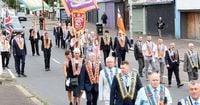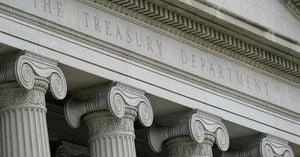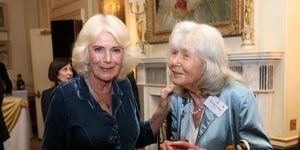On July 12, 2025, tens of thousands of people across Northern Ireland took to the streets to commemorate the annual Twelfth of July celebrations, a tradition marking the historic victory of King William of Orange over King James II at the Battle of the Boyne in 1690. This year’s events, spread across 19 main locations, saw the largest crowds in a generation gather amid scorching temperatures exceeding 25°C, with some areas even reaching 30°C for the first time in nearly three years.
The Orange Order, founded in 1795 and named after King William, continues to be the central organiser of these parades, which are considered the largest public Protestant witness of their kind worldwide. The parades are both a celebration of cultural heritage and a symbol of unionist identity, drawing participants and spectators from across the United Kingdom and beyond.
Most Wor. Bro. Edward Stevenson, Grand Master of the Grand Orange Lodge of Ireland, described this year’s pageantry as “momentous,” highlighting the “largest crowds witnessed for a generation.” He expressed gratitude for the “great day” and the presence of many tourists and visitors, noting that the scale of the celebrations remains “a testament to the shared sense of community identity and cohesiveness of the Orange family.”
The festivities included parades in cities, towns, and villages such as Belfast, Lisburn, Keady, Maghera, and Coleraine, with speeches emphasizing the importance of unity among unionist political parties. DUP leader Gavin Robinson addressed the parade in Belfast, while Northern Ireland’s deputy First Minister Emma Little-Pengelly spoke at Lisburn. Ulster Unionist MP Robin Swann delivered remarks in Carnlough, Co Antrim. Orange Order deputy grand master Harold Henning, speaking at the Maghera parade, urged for closer collaboration between unionist parties, stating, “Cooperation between our political representatives must be encouraged - more than that, it should be demanded, and country should always come before party or individual self-interest.”
In Keady, Co Armagh, Orange Order grand secretary Mervyn Gibson reflected on the union’s enduring strength, emphasizing its role in providing “stability, opportunity, and purpose.” He described the United Kingdom as “more than just a political entity,” but rather “a partnership of four nations - England, Scotland, Wales, and Northern Ireland - each with its own identity, traditions, and strengths.” Gibson called on attendees to focus on “building and promoting this union which a generation defended during the Troubles against the murderous, cowardly terrorist campaign of republicans.”
The Twelfth celebrations followed the traditional burning of bonfires at an estimated 300 locations across loyalist neighbourhoods on the nights of July 10 and 11. While most bonfires passed peacefully, some sparked controversy and condemnation. Notably, effigies of migrants in a boat were burned on a bonfire in Moygashel, Co Tyrone, alongside images of the Irish rap band Kneecap and Irish flags on other pyres. A particularly contentious bonfire was lit on a site containing asbestos near an electricity substation off the Donegall Road in south Belfast, drawing criticism from Northern Ireland’s Environment Minister Andrew Muir, who expressed disappointment that it was lit despite warnings.
The Northern Ireland Fire and Rescue Service (NIFRS) faced a challenging and busy period, attending 194 operational incidents between 6 pm on July 11 and 2 am on July 12, with 72 related specifically to bonfires. NIFRS Area Commander Andy Burns reported a 154% increase in emergency calls compared to 2024, peaking between 10 pm and 1 am. During the bonfire response, one firefighter was attacked while attending a bonfire in Lisburn, Co Antrim, though thankfully the firefighter was not injured and remained on duty.
Policing the parades and bonfires remains a significant logistical and financial undertaking. Over 4,000 police officers and staff were deployed on July 12, with around 1,200 officers monitoring public safety during the 11th night bonfires. The cost of policing these events, including republican commemorations and internment anniversary events, reached £6.1 million last year, up £1.5 million from the previous year. The Police Service of Northern Ireland (PSNI) anticipates even higher costs in 2025 due to falling police numbers and increased reliance on overtime.
Chief Constable Jon Boutcher urged mutual respect during the commemorations, emphasizing that officers would support lawful and peaceful events but take “firm and proportionate action” when necessary to maintain safety. He said, “Our priority remains the safety and wellbeing of everyone.”
One of the most sensitive aspects of this year’s events was the Orange Order feeder parade passing the Ardoyne shops in north Belfast on the morning of July 13. The Parades Commission permitted this return parade, limiting it to one band and 50 members to reduce tensions at a location that has historically been a flashpoint for loyalist and republican violence. The 2016 Ardoyne Agreement had imposed a moratorium on return parades in this area, except for specific exceptions. However, this year’s decision to allow the parade without consultation angered local residents groups, who described it as “unacceptable” and “harmful to community relations.”
Residents emphasized the need for continued negotiations toward a permanent, mutually agreeable solution to parading in Ardoyne. In 2013, a 24/7 loyalist protest camp was established at this interface after the Parades Commission prevented Orangemen from passing the Ardoyne shops on their return route. The 2016 deal allowed outward parades along the road past Ardoyne shops on the morning of July 12 but prohibited return parades to the Orange Hall in the evening. The 2025 return parade, scheduled from 8:30 am to 10 am finishing at Ligoniel Orange Hall, was conducted under strict conditions: no supporters accompanying the lodges and band, and only hymn music played. No formal protest had been notified to the Commission by July 11, but local groups were reportedly considering action.
Looking ahead, the traditional July 13 events organised by the Royal Black Preceptory in Scarva, Co Armagh, were planned for Monday, July 14, 2025. These include a parade and a sham fight reenacting the historical rivalry between monarchs William and James, continuing the cultural observances surrounding the Twelfth.
Despite the tensions and challenges that have historically accompanied the Twelfth of July, the 2025 celebrations largely proceeded peacefully, reflecting both the enduring significance of this cultural tradition and the complex social fabric of Northern Ireland. The combination of historic remembrance, community identity, political calls for unity, and ongoing sensitivities around parading routes underscores the multifaceted nature of this annual event.





